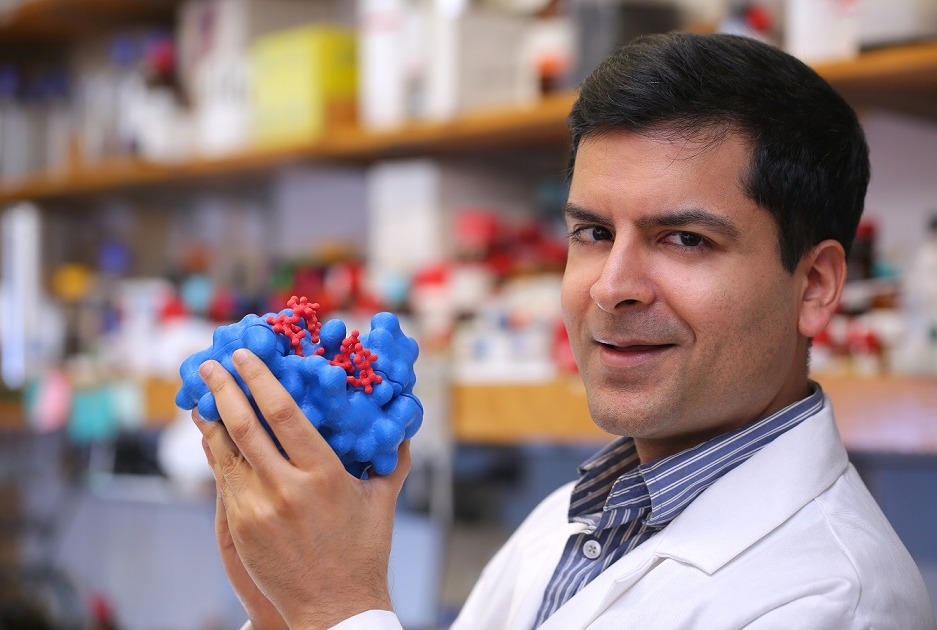Chemical modifications that appear on some RNA transcripts may have evolved in part to help cells repair themselves after damage, and may also be a key to understanding important human diseases, according to new research from scientists at Weill Cornell Medicine and Cornell’s Ithaca campus.
Modifications called N6–methyladenosine, or m6A marks, are made by enzymes on the RNA transcripts of some human genes under certain conditions, but the functions of these marks have been largely mysterious. The research team, in a study that appeared online in Nature on July 10, found that m6A marks can cause m6A-containing RNAs to be stored in special, droplet-like compartments in cells. Normally these RNAs would be translated into proteins by the cells’ protein-making machinery, but their sequestration in the droplet-like compartments effectively blocks protein production. The scientists found evidence that one important context for this RNA-sequestering action is when a cell is being damaged or otherwise stressed.
“Our findings suggest that a major function of m6A marks is to induce the storage of certain RNAs during cellular stress,” said senior author Dr. Samie Jaffrey, the Greenberg-Starr Professor of Pharmacology at Weill Cornell Medicine. “A lot of these m6A-marked RNAs encode cellular repair proteins, so it appears that cellular repair processes are suppressed in this way during stress, but then un-repressed when the damage has stopped and it becomes appropriate for repairs to start.”
That RNA-modifying marks such as m6A exist has been known for decades, but intensive research on them, and the appreciation of their likely importance to human health and disease, has come only very recently. Dr. Jaffrey and his laboratory, for example, in a landmark 2012 study developed a method to map m6A marks precisely on human RNA transcripts, an essential step in studying their biological roles.
Dr. Jaffrey and his team, which included first author Ryan Ries, a Weill Cornell Graduate School of Medical Sciences doctoral student, and co-author Dr. Hojoong Kwak, assistant professor in the Department of Molecular Biology and Genetics at Cornell University, began their new study by examining three proteins called YTHDF proteins, which naturally bind to m6A marks on RNAs. The scientists found that the YTHDF proteins have properties that make them tend to stick together when multiple copies are present on m6A-marked RNAs. This clustering causes the YTHDF proteins and their attached m6A-containing RNAs to sequester themselves in droplet-like compartments within the cell—effectively shutting down production of the proteins the RNAs encode.
Scientists have known that droplets of sequestered RNAs can form in cells, for example during conditions of cellular stress. The droplet-like compartments formed under these conditions are called “stress granules.” The discovery by Dr. Jaffrey and colleagues shows that m6A marks are one trigger that causes mRNAs to be placed into stress granules.
Stress granules recently have become a focus of research for scientists studying Alzheimer’s disease, Parkinson’s disease, ALS and some other neurodegenerative diseases. There is evidence that stress granules in these diseases may become either permanent or so long-lived that they are harmful instead of helpful. “The suspicion is that the constant repression of important RNA transcripts that encoded cell-repair proteins may be part of the reason that cells die in these diseases,” said Dr. Jaffrey, who is also co-founder, equity stakeholder and consultant for Gotham Therapeutics and Lucerna.
He noted that stress granules’ concentration of RNAs and their inherently “sticky” binding proteins such as YTHDF might also promote the formation of the solid protein aggregates seen in these diseases, such as the tau and amyloid beta aggregates of Alzheimer’s.
Dr. Jaffrey and his colleagues are now studying the role of m6A marks in diseases associated with stress granules, and are investigating whether a disruption of m6A’s granule-forming function in these diseases could help restore the health of affected cells.

